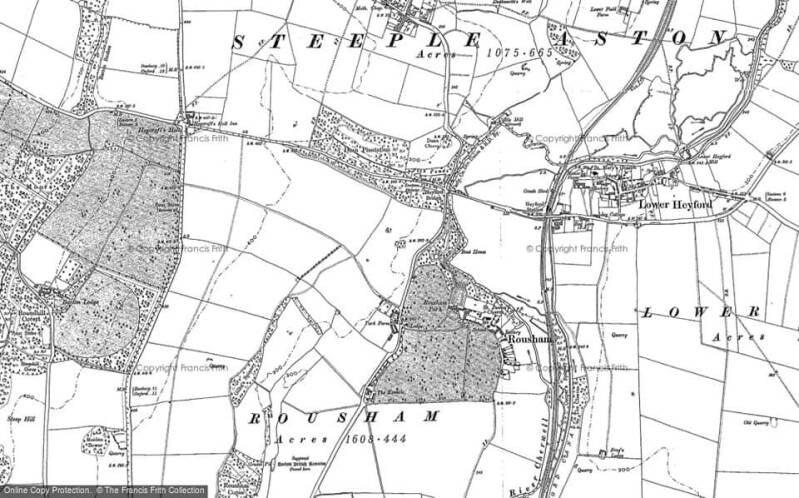The History of Rousham
The village of Rousham lies roughly midway between Oxford and Banbury, in the Cherwell Valley.
The village's name is partly derived from the personal name Hrothwulf, indicating that an Anglo-Saxon settlement may have existed on or close to the site.
The original parish church was dedicated to St Germanus of Auxerre, who died in 448 AD, suggesting that Christianity was adopted by residents of the Rousham area quite a bit earlier than in other places nearby; St Germanus visited Britain during the early 5th century, so it may have been the Saint himself who introduced the religion to the area.
In 1086, the Domesday Book recorded 33 male tenants in total, split between two estates within the parish. Rousham didn't experience as high a death toll as neighbouring places during the Black Death, and according to a 1377 Poll Tax document, a total of 88 adults paid the tax, showing that the population was flourishing at this time (whereas nearby towns and villages were still showing signs of decline).
Whilst an earlier manor house was mentioned in surviving records, the present-day Rousham House was built on the site of the original by Sir Robert Dormer soon after he purchased the manorial rights for Rousham in 1635. The 1662 Hearth Tax recorded a total of 15 hearths, showing that this was a large and opulent residence even during the 17th century.
Southwest of the house lies an area of parkland, known as 'The Warren' in 1721; upon this land was built a small gothic building, circa 1775, which was later used as a cowshed! The gardens adjacent to the manor house were described in 1728 as being "the prettiest place for waterfalls, jets and ponds, inclosed with beautiful scenes of green and hanging wood".
The village lies entirely within the park surrounding the manor house, consisting of a row of houses, most of which were built by the Cottrell-Dormer family during the late 18th/early 19th century. Opposite Rousham House was an ale-house known as The Swan, which was first recorded in 1711 - this was subsequently demolished, and a new public house was constructed a little further along the road.
Two other public houses - The Horse & Groom and The Darling - were licensed in approximately 1801 and 1809 respectively.
During the English Civil War, in 1644, Royalist troops plundered the manor house and village, and a small force of Royalist cavalry occupied the house. Sir Robert Dormer and his son possibly had Parliamentarian sympathies, refusing to pay the 'Ship Money' demanded by the King a few years previously. Other manorial families included the d'Oillys, Foliots and Shareshulls, to name but a few.
By the beginning of the 13th century, Rousham was divided into two fields, later being extended to three fields by the late Middle Ages. The arable land was divided into furlongs, which made it possible to implement more complex crop-rotation. Various meadows and common land also existed within the parish, where animals would graze freely.
As of 1524, the wealthiest men living within the fairly prosperous parish were John Archer, William Meese, and George Fulshurst. As an example, Meese and Fulshurst were assessed on £20 and £10 worth of goods respectively, which weren't amounts to be sniffed at in those days! According to an old currency converter, £20 in the year 1520 would've equated to approximately £10,400 as of 2017... This in turn equated to roughly £5,408,255 during the early-mid 16th century! (Source: https://www.nationalarchives.gov.uk/currency-converter/#currency-result).
The aforementioned church underwent three more name changes - firstly, from St Germanus' to St Mary's, and secondly, from St Mary's to St James'. The third and final change was to St James' & St Leonard's combined.
Non-comformity was scarcely recorded within the parish of Rousham, except for a maidservant and gardener being Quakers during the 17th century, and one Quaker and a Presbyterian being mentioned during the following century. A Baptist family, along with two or three Wesleyan Methodists were recorded during the 19th century.
During the 18th century, education within the parish officially began when the Dormer family paid a woman called Damaris Dutton - widow of the former rector Ellis Dutton - £3 annually, in exchange for teaching poor children to read.
I will post more about Rousham later, so stay tuned!
The map below was made circa 1898, and is courtesy of the Francis Frith collection.

Create Your Own Website With Webador